After the Surquillo Market visit and fruit tasting, we moved on to cooking!
The menu:
- Papas a la huancaina
- Causa de pollo
- Ají de gallina
- 3 types of ají/salsa
We started with chicken and potatoes, since each was a base ingredient for our dishes.
Causa is a typical potato dish with lots of mayonnaise, avocado, and any filling you want (like chicken, tuna, octopus, etc). We made a chicken causa.
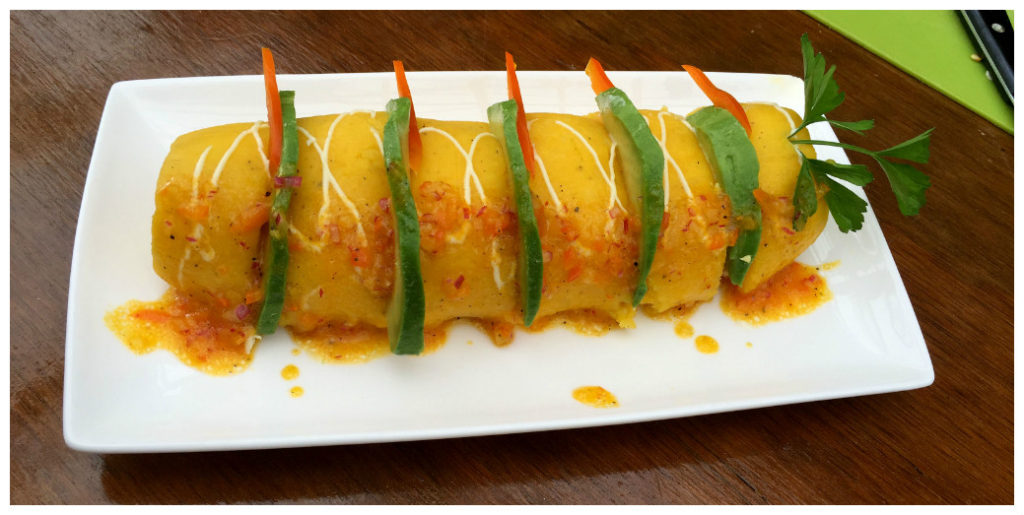
It starts with the ever-important potato. They’d been steamed and peeled already, and we just had to run them through a ricer. During the potato prep time, we also had chicken boiling in preparation for the filling, as well as for ají de gallina.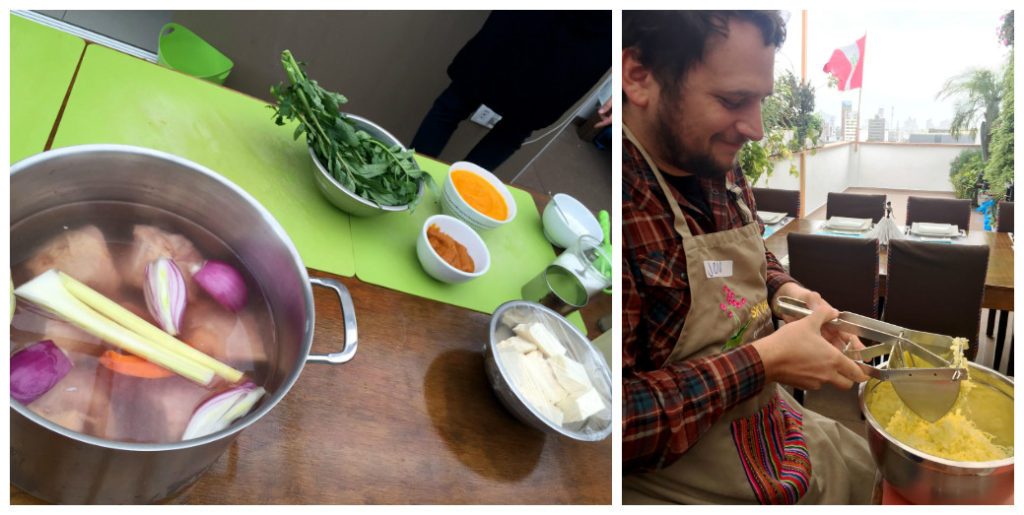
The mashed potatoes are mixed with lime juice, neutral vegetable oil, ají amarillo paste, and salt and pepper to taste. This is the base of causa. The Peruvian potatoes we used were very starchy, and our chef recommended that we use russet potatoes in the USA, or, add some potato flakes from a box of instant potatoes to help achieve the dry consistency we’re after here. The cooked chicken is mixed with mayo and pepper to taste, and you’ve made a basic chicken salad to fill the causa with. Cut some avocado into slices and you’re ready to assemble.
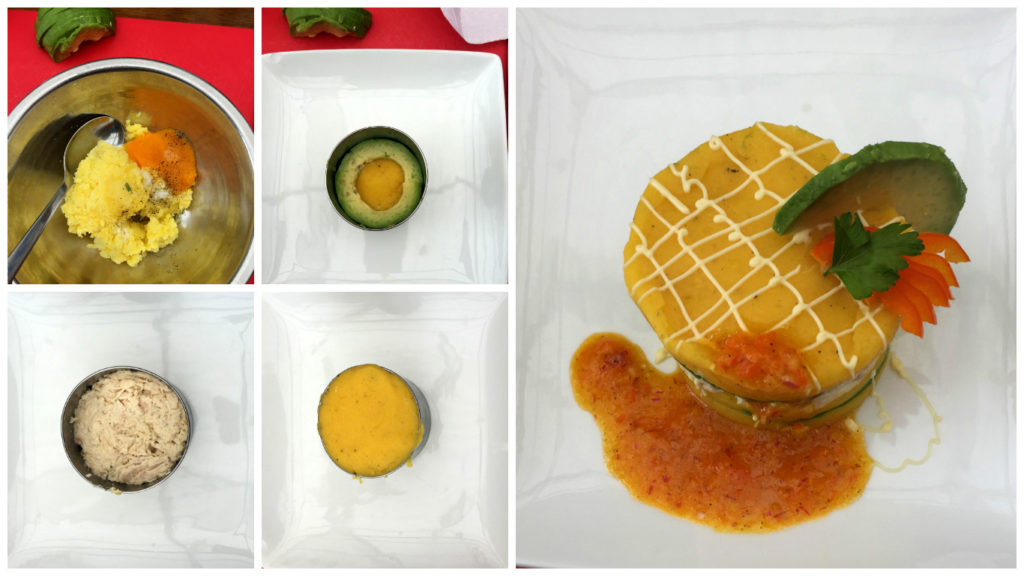 We used a ring mold and stacked layers of potato, avocado, potato, chicken, avocado, and more potato. We decorated it with mayonnaise and slices of chili pepper and avocado.
We used a ring mold and stacked layers of potato, avocado, potato, chicken, avocado, and more potato. We decorated it with mayonnaise and slices of chili pepper and avocado.
The last step is to make a sauce to accompany the causa: mince half an onion and some fresh yellow chili, add 1-2 tbsp. of ají amarillo paste, 1 tbsp. of lime juice, 3 tbsp. of vegetable oil, 3 tbsp. of vinegar and salt & pepper to taste.
This dish keeps well when prepared in advance, so it would also make a good potluck dish where you can prep it in a lasagna dish and then cut pieces to serve from there. The chef made a roll to show even more versatility, using plastic wrap to help mold the roll.
Next up, papas a la huancaina, another potato dish with a rich, creamy cheese sauce.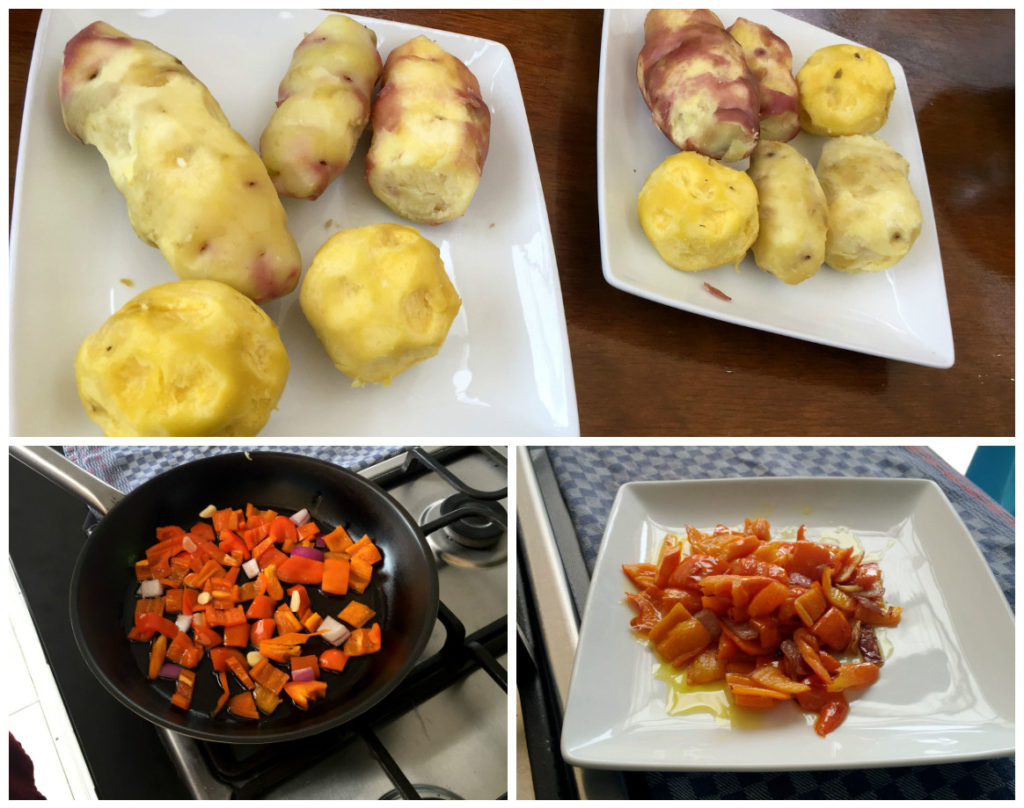
The boiled and peeled potatoes await its sauce, which starts with chopped peppers (ají amarillo, deseeded), onion, and garlic cloves. After a caramelizing sauté in neutral vegetable oil and a bit of time to cool, the pepper/onion/garlic mixture gets blended up with fresh cheese and evaporated milk. Add a little bit of lime juice, and salt and pepper to taste. If the sauce is too thick, add more milk. If it’s too thin, add a piece of boiled potato or soda crackers as a thickener.
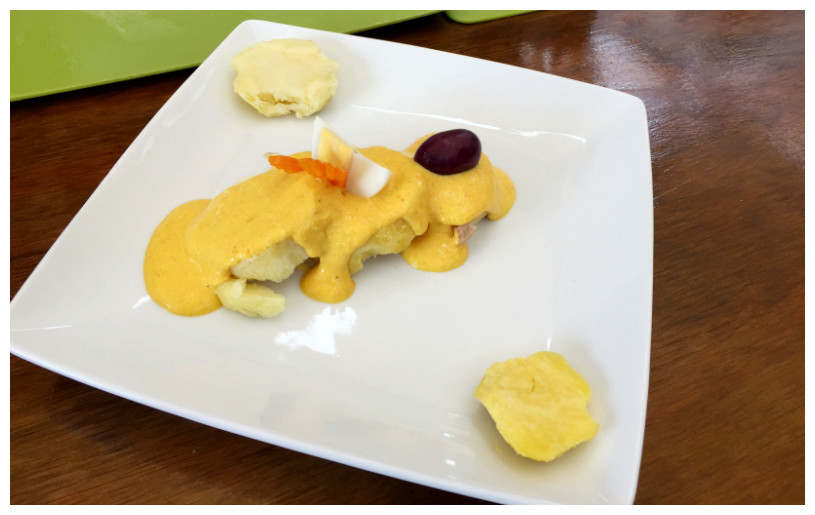
The sauce should completely drench the potatoes – we had a bit of extra potato bits on our plates to accompany the 3 sauces we’d make next.
The chef said oftentimes places that serve papas a la huancaina may use thickeners in place of cheese, degrading the taste and quality. It’s a relatively simple dish, but as with all food, the quality of ingredients dictates the outcome.
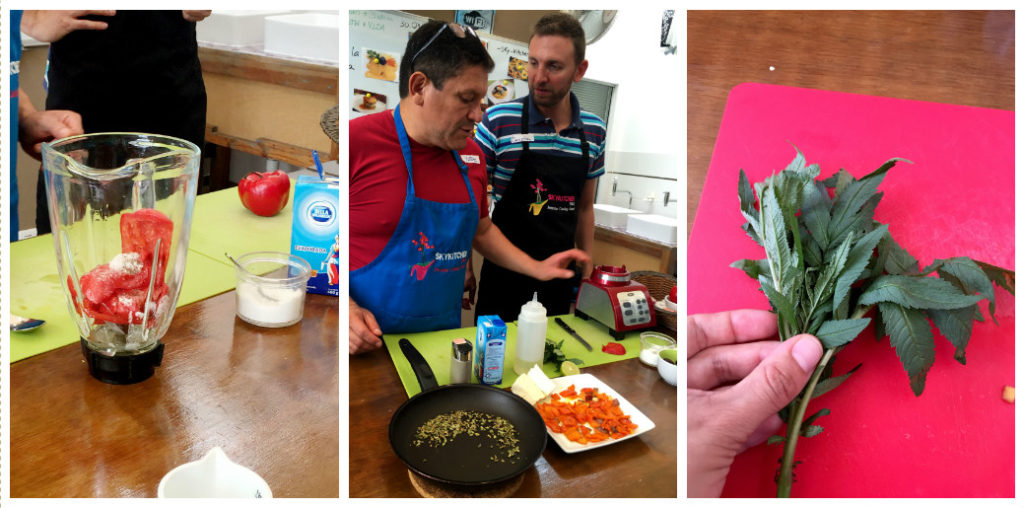
The sauces each pack a flavor punch to make each potato they cover stand out in its own character. First, we witnessed the makings of a crema de rocoto sauce. The black seeded, bell pepper-looking rocoto pepper just needs some roasting/dehydration before being blended with evaporated milk, lime juice, and vegetable oil. Salt/pepper to taste and that’s about it.
Next came a crema de ají sauce. Toast some dried oregano in a saucepan, and caramelize some more peppers, onion, and garlic with neutral oil to start. Blend all this with some mayo and white wine vinegar, and add salt and pepper to taste.
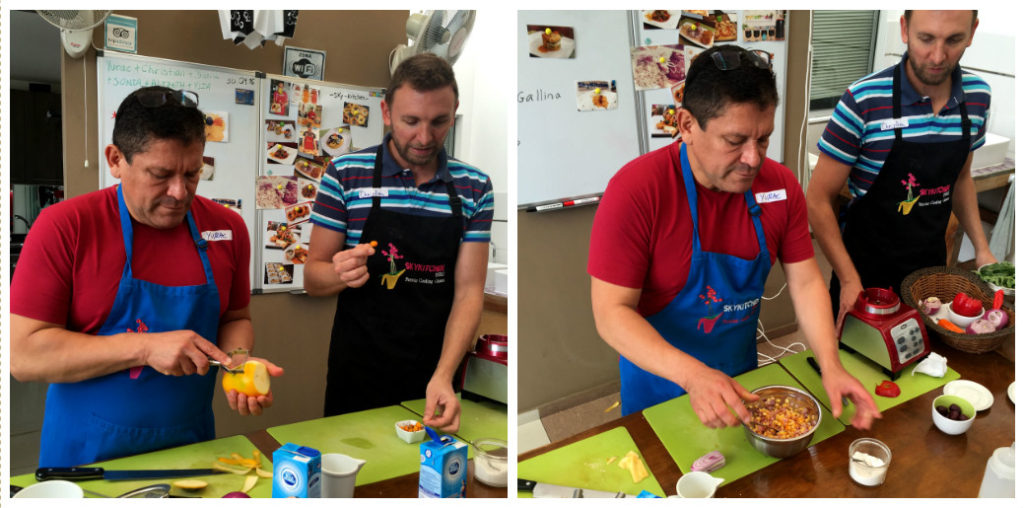
If you’d like, add some huacatay (a black Amazonian minty herb) and blend until coarsely mixed throughout. Now you’ve got ají huacatay!
The next sauce is a coarsely chopped salsa that simply contains: cocona (yellow Amazonian tomato), chaparitas chiles, onion, white vinegar, vegetable oil, lime juice, salt, pepper.
The truth is the hardest part of making these sauces is finding the ingredients!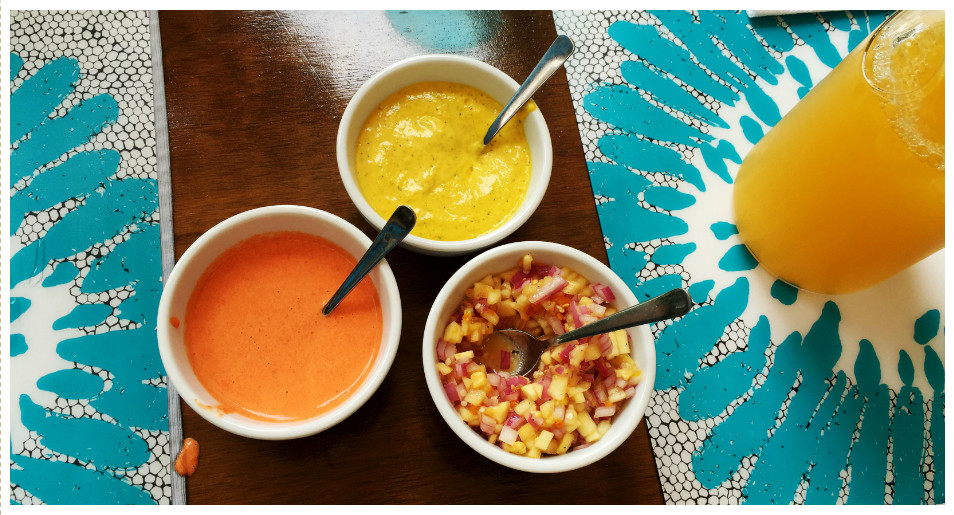
Phew, by now we were certainly getting full, but our lesson didn’t end there. The richest and most complex dish was next: ají de gallina.
Consisting of chicken in a spicy sauce, accompanied by rice (or potatoes), it ages well and is perhaps even better after it’s had some time to deepen its flavors once cooked.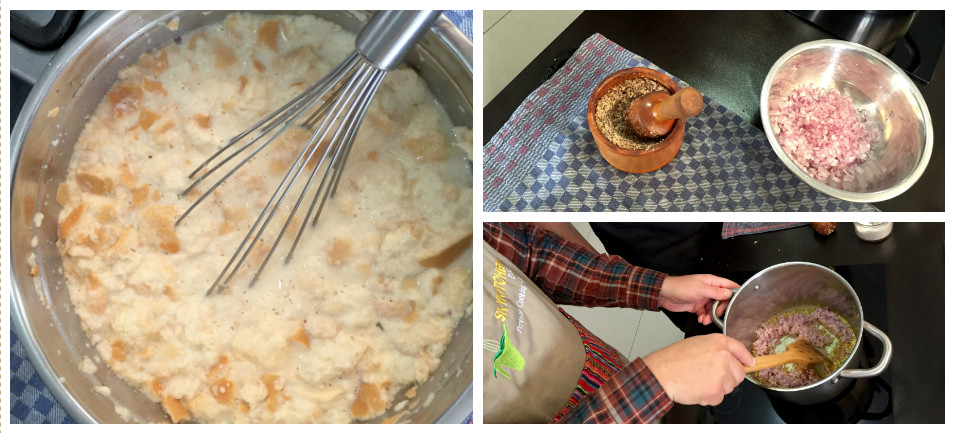
The sauce is made from a base of bread, milk, and chicken stock. Depending on the particular texture you’re going for, you can let the bread soak anywhere from 10 minutes to overnight.
Grind some pecans until coarse (using a mortar or food processor) and finely dice onion and garlic. With some vegetable oil, fry some turmeric to release the flavor (about 1 minute), and then add the pecans. Fry for another two minutes, and then add the onion and garlic. Fry for another 3 minutes and add ají amarillo paste. 5-10 minutes later, it’s ready for the bread/milk mixture. Reduce heat and continue to stir so it doesn’t burn. Once it starts to boil, add some grated parmesan cheese and the shredded chicken. Stir until incorporated. If it’s too thick, add chicken stock. Serve with rice.
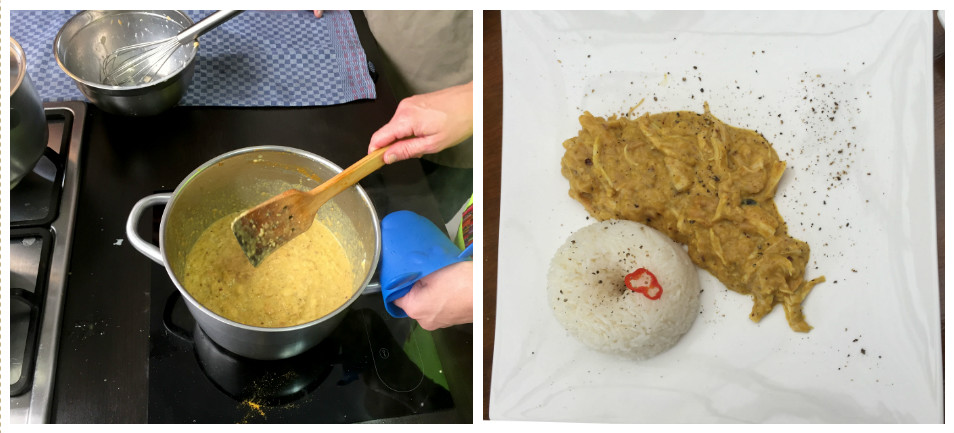
Mouth-watering. And now I’m craving it of course.
One of the first recommendations we had from a Limeño (local from Lima), was for ají de gallina. Our cab driver, a self-proclaimed foodie gave us this recommendation as a dish we absolutely had to try. “I’m a little fat, but that’s because I love to eat,” he confessed proudly. That, my new friend, is something we have in common.
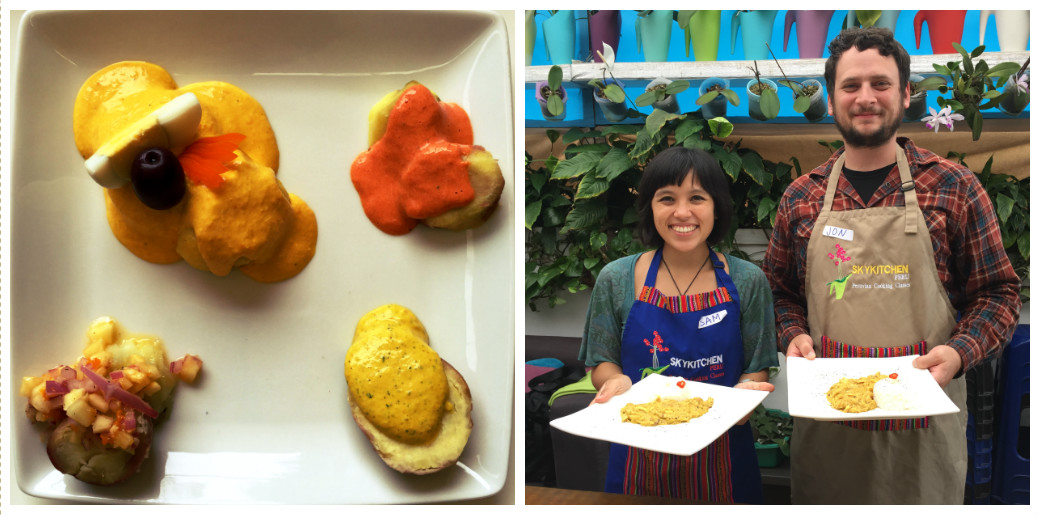
The food looks delicious .
Where you at the top of some fancy kitchen ? The view must have been beautiful
Sounds like we will have international food from our personal chefs when you come back. ?
Yes it was a rooftop kitchen, and quite fancy!
Appreciate your sharing the yummy cooking classes with us! Gotta try a version of the causa some day.
When I first heard about causa, I wasn’t so sure about lime and potato together but it really works!